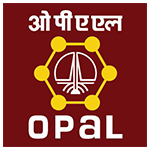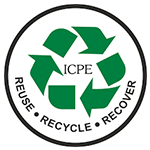supported by



Plastics have become the ubiquitous workhorse material of the modern economy – combining unrivalled functional properties with low cost. Their use has increased twenty-fold in the past half-century and is expected to double again in the next 20 years. Today nearly everyone, everywhere, every day comes into contact with plastics – especially plastic packaging. As a global estimate, around 300 million tonnes of plastics are produced per annum and its widespread use in the modern era has become a promising environmental problem. Plastic debris is ubiquitous in the oceans around the world; it is estimated that at least 5.25 × 1012 plastic particles weighing 2.7 × 105 t are currently floating at sea. For those of us working in the sustainable materials management space, we’ve understood for a long time that plastic pollution in the world’s oceans has been a serious problem. But, for many, the concern reached a zenith when the World Economic Forum shed light on the projection that, by weight, there will be more plastic in our oceans than fish by 2050. Most ocean pollution starts out on land and is carried by wind and rain to the sea. Once in the water, there is a near-continuous accumulation of waste. Plastic is so durable that the EPA reports “every bit of plastic ever made still exists.” Due to its low density, plastic waste is readily transported long distances from source areas and concentrates in gyres, systems of rotating ocean currents. All five of the Earth's major ocean gyres are inundated with plastic pollution. But it's not limited to the gyres; studies estimate there are 15–51 trillion pieces of plastic in the world's oceans — from the equator to the poles, from Arctic ice sheets to the sea floor. Emerging research suggests that not one square mile of Surface Ocean anywhere on earth is free of plastic pollution.
Plastics in the marine environment are of increasing concern because of their persistence and effects on the oceans, wildlife, and especially on humans. Several broad classes of plastics are used in packaging: Polyethyelene (PE), Polypropylene (PP), Polystyrene (PS), Polyethylene terephthalate (PET); and Polyvinyl chloride (PVC). A recent significant finding is that minute fragments of plastic debris, termed microplastics, occur in oceans worldwide. Microplastics, a form of man-made litter, have been accumulating in the oceans at least for the last four decades. Microplastics pollution is evidently a major concern when talking about environmental protection in light of human development. This is in part because many people do not come face-to-face with it on a daily basis, and the effects caused by contaminating the world’s waterways have not yet reverberated back to affect humans in a substantial way. Microplastics are particles less than five millimeters in size that deteriorate from larger plastic pieces that have entered the oceans. Microplastics come from a variety of sources, including from larger plastic debris that degrades into smaller and smaller pieces. In addition, microbeads, a type of microplastic, are very tiny pieces of manufactured polyethylene plastic that are added as exfoliants to health and beauty products, such as some cleansers and toothpastes. These tiny particles easily pass through water filtration systems and end up in the ocean, posing a potential threat to aquatic life. According to a 2012 survey, 4,360 tons of microbeads were used throughout all European Union countries in that year alone. In light of growing apprehension regarding ocean pollution, and considering the broad range of products from which this pollution originates, it is no shock that tiny plastic particles can accumulate to such quantities as 93-236 thousand tons floating in the oceans as predicted by a recent study in Environmental Research Letters. It is concerning, however, that this amount is 37 times greater than previous estimates because it speaks to just how much more abundant these personal care products are becoming, and how much of an impact they can realistically have on marine wildlife.
Owing to their small size, microplastics are considered bioavailable to organisms throughout the food-web. Their composition and relatively large surface area make them prone to adhering waterborne organic pollutants (e.g. POPs) and to leaching of plasticisers that are considered toxic. POPs, the hazardous human-made chemical, that occur universally in sea water at very low concentrations, are picked up by microplastics via partitioning and the hydrophobicity of POPs facilitate their concentration in the microplastic litter at a level that is several orders of magnitude higher than that in sea water. Plastic particles have the potential to act as vectors for the transport and release of sorbed contaminants like POPs (persistent, bioaccumulative and toxic) and additives. POPs are organic compounds that are resistant to environmental degradation through chemical, biological and physical processes. They are potential cause for many adverse effects in marine life and humans (e.g. cancer, malformation, decrease in immune response, impaired reproductive ability). Ingestion of microplastics may therefore be introducing toxins to the base of the food chain, from where there are potential possibilities of bioaccumulation. Microplastics can be consumed by a diverse array of marine organisms, across trophic levels, including zooplankton, bivalves, barnacles, fish, turtles and birds. Over 220 different species have been found to consume microplastic debris in nature. Of these, ingestion is reported in over 80% of the sampled populations of some invertebrate species. The harmful effects of these pollutants on organisms includes reductions in fecundity, lower feeding rates, reduced ability to remove pathogenic bacteria, reduced energy reserves and balance, and decreased lysome stability . Consequently, microplastics have socio-economic consequences by modifying the marine food chain and ecosystem, leading to potentially serious human health implications.
In terms of mismanagement of plastic waste, India ranks 12th position among the top 20 most mismanaged countries in the world according to a study by Jenna Jambeck, an environmental engineer who led the 2015 study that determined this staggering number. This habitat and its environmental microplastic pollution impacts are still emerging areas of research. In our recent study, it was found that the recreational beaches of Mumbai, Goa, Chennai were contaminated with microplastics. Research in this arena has taken a huge leap recently; but unfortunately in Indian scenario, only few reports are available. It is expected that Indian coastal region are very much affected by microplastics. Hence National Institute of Oceanography (NIO) has initiated joint collaborative study with Japan and Netherlands to bring out more information about plastic pollution status in Indian coastal zone.
It is high time to understand for us that Plastic, including biodegradable plastic, not only takes years to decompose in our environment but it, in fact, rarely fully disappears. No matter how inconvenient the truth, it is important that as citizens we take action and change our consumption patterns in favour of alternatives to plastics so that we can minimise our exposure to harmful additives and also help our environment. So the best thing we can do to protect our waterways is try to keep as much plastic as possible out of the waste stream in the first place. There are many small ways you can have a big impact. For reducing the the generation of more plastics waste we have to take 4 Rs pledge- Refuse, Reduce, Reuse and Recycle. 1) Refuse disposable plastic whenever and wherever possible. We should choose items that are not packaged in plastic, and carry our own cloth bags, metal containers and utensils. Say 'no straw, please.' One of the easiest ways to keep plastic out of the landfill is to refuse plastic straws. Simply we should inform waiter or waitress that we don't need one. Restaurants are less likely to bring us a plastic one if they see that we have brought our own. 2) Reduce our plastic footprint. We should cut down on our consumption of goods that contain excessive plastic packaging and parts. If it will leave behind plastic trash, we better don’t buy it. For example, instead of buying juice in plastic bottles, prefer to buy paper tetra pack or make your own fresh-squeezed juice or simply eat fresh fruit, which will be good for our own health. By simply switching from normal diapers to cloth diapers, we will not only reduce plastics pollution but also will reduce baby's carbon footprint, it is also money saving. According to the EPA, 7.6 billion pounds of disposable diapers are discarded in the U.S. each year. Plus, it takes about 80,000 pounds of plastic and more than 200,000 trees a year to manufacture disposable diapers for American babies alone. Avoid buying plastic water bottles, instead carry your own metal water bottle. 3) Reuse durable, non-toxic straws, utensils, to-go containers, bottles, bags, and other everyday items. Choose glass, paper, stainless steel, wood, ceramic and bamboo over plastic. The plastic containers used in daily life kitchen can be cleaned and reuse for storage, instead to throwing it to waste. And finally 4) Recycle what we can’t refuse, reduce or reuse. We should buy those plastics which have recycle symbols, so that the trash which will be generated can be recycled maximum. It is very important to understand the not all plastics can be recycled. We should dispose the plastic waste properly so that it can be taken for recycling. Recently, the Minister of State for Environment, Forest and Climate Change, Govt. of India revealed that 15, 000 tonnes of plastic waste is generated every day, out of which 9, 000 tonnes is collected and processed, but 6, 000 tonnes of plastic waste is not being collected. Hence it is very important at this time for increasing the awareness of the general public for disposing plastic waste in the appropriate manner. We also need to pay attention to the entire life cycle of items we bring into our life, from source to manufacturing to distribution to disposal. Moreover we have to switch over to the biodegradable plastics in daily life products than low quality polymers. People are trying to find ways to reduce the accumulation of plastics with innovative recycling ideas and promoting more responsible use of already existing materials. Companies should produce everything from fabrics to toys to equipment and insulation using reclaimed plastic and other synthetic materials. We can also restore by using plastic to create synthetic crude oil which can be refined into fuel. In India, government is taking initiatives to promote use of plastic waste for road construction as per Indian Road Congress guidelines or energy recovery. However awareness among people is very essential for not throwing the trash in the your surrounding and ocean as well. Because once it entre the water, it is almost impossible to remove. Gradually those macro size plastics can cause million tons of microplastics which are easy to intake by organisms and they may end up to death because of those hazardous pollutants. Swatch Bharat mission is not only a government mission or just a one day task. It should be our concern to keep our environment like our own home. Awareness and education can bring huge difference when put into action.



All queries and unsolicited submissions for Outlookindia.com's web-only columns and features are welcome.